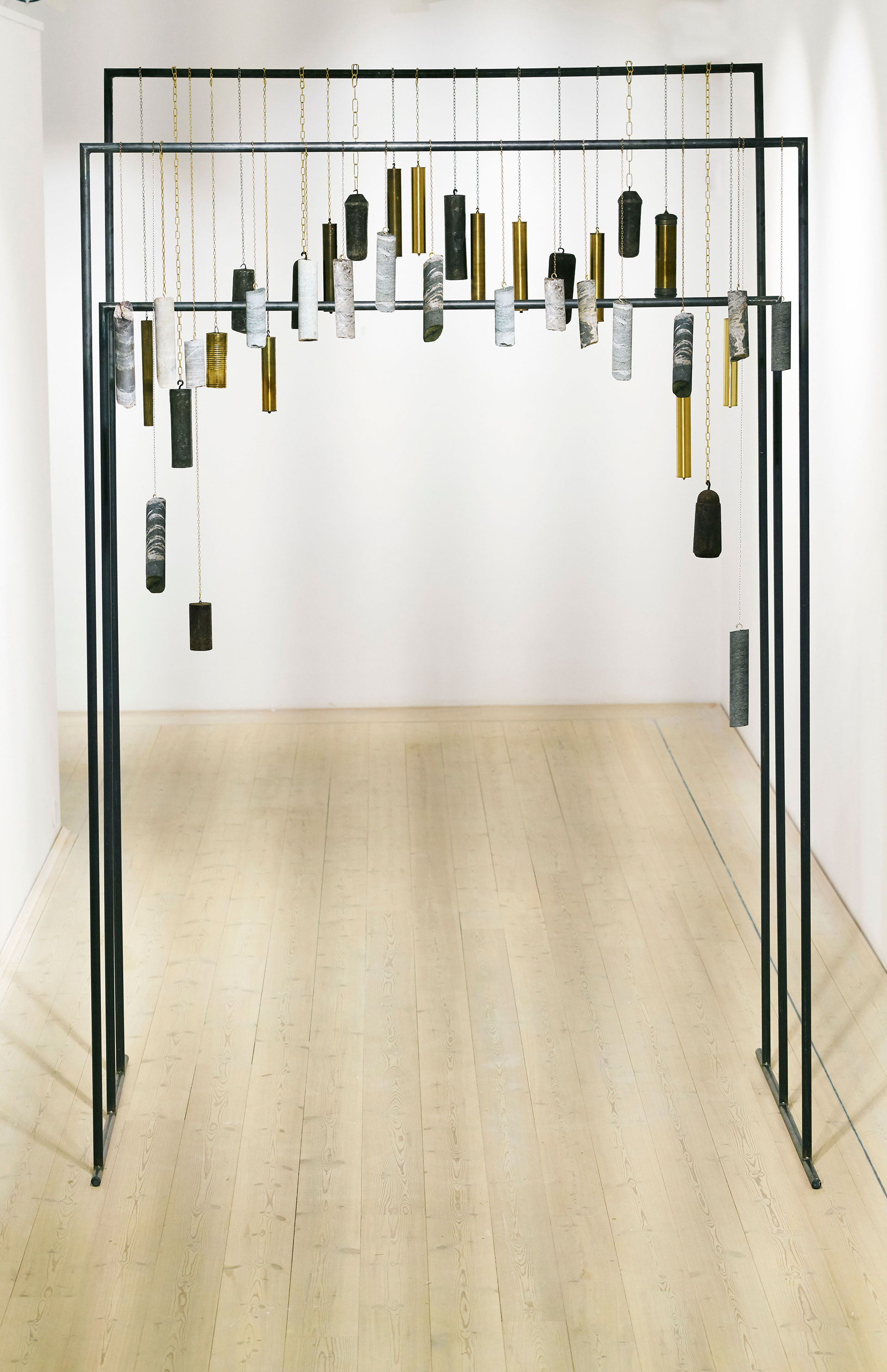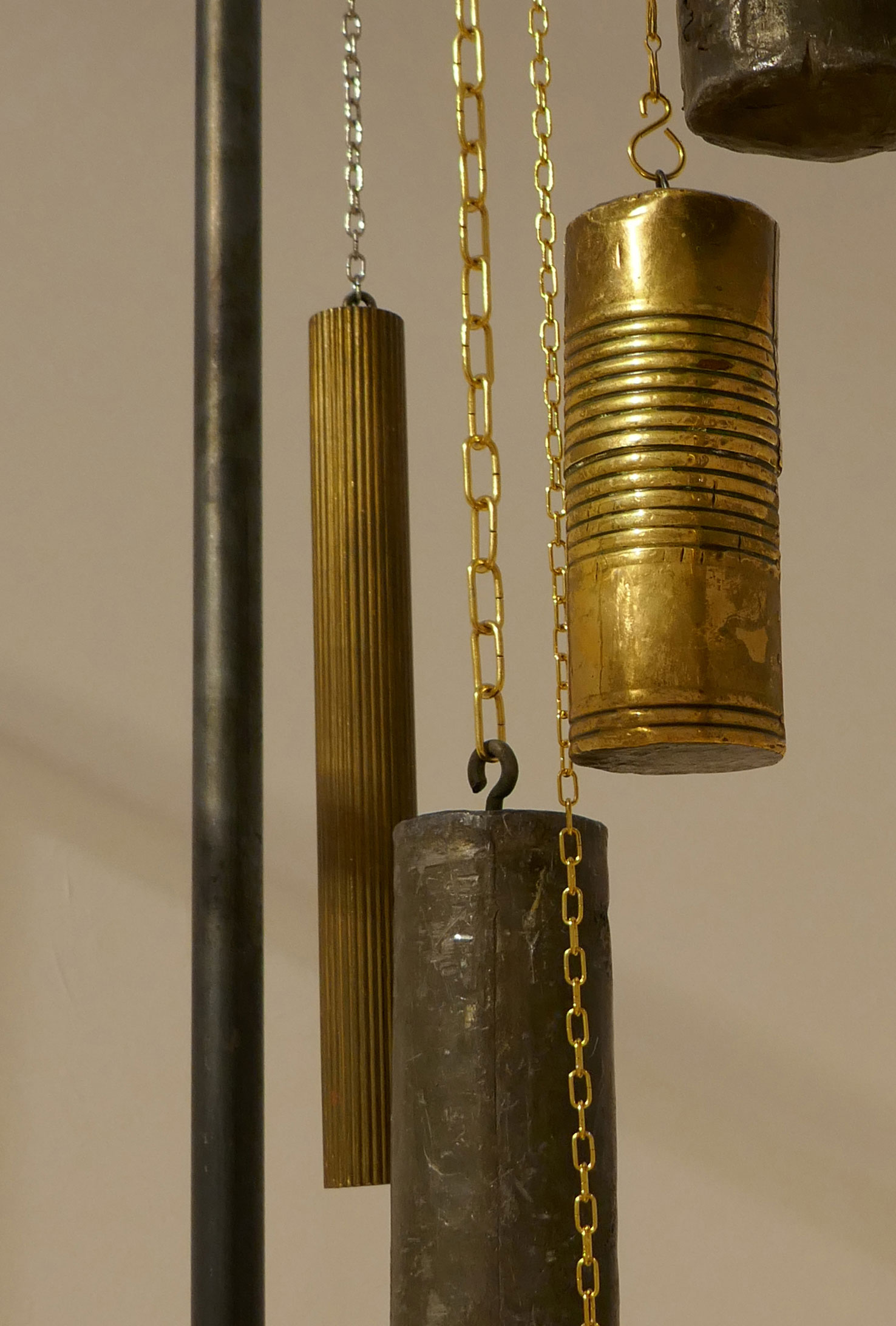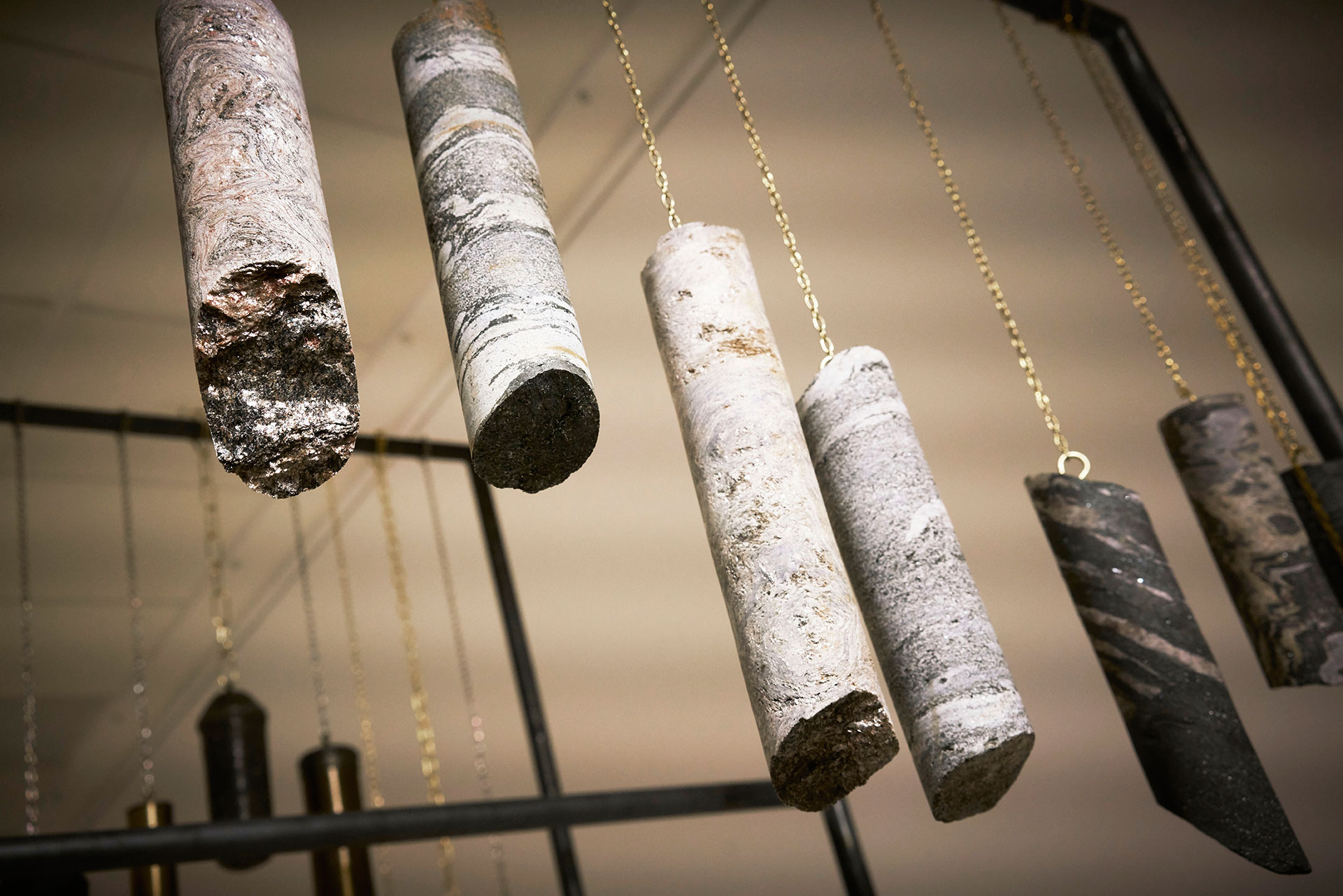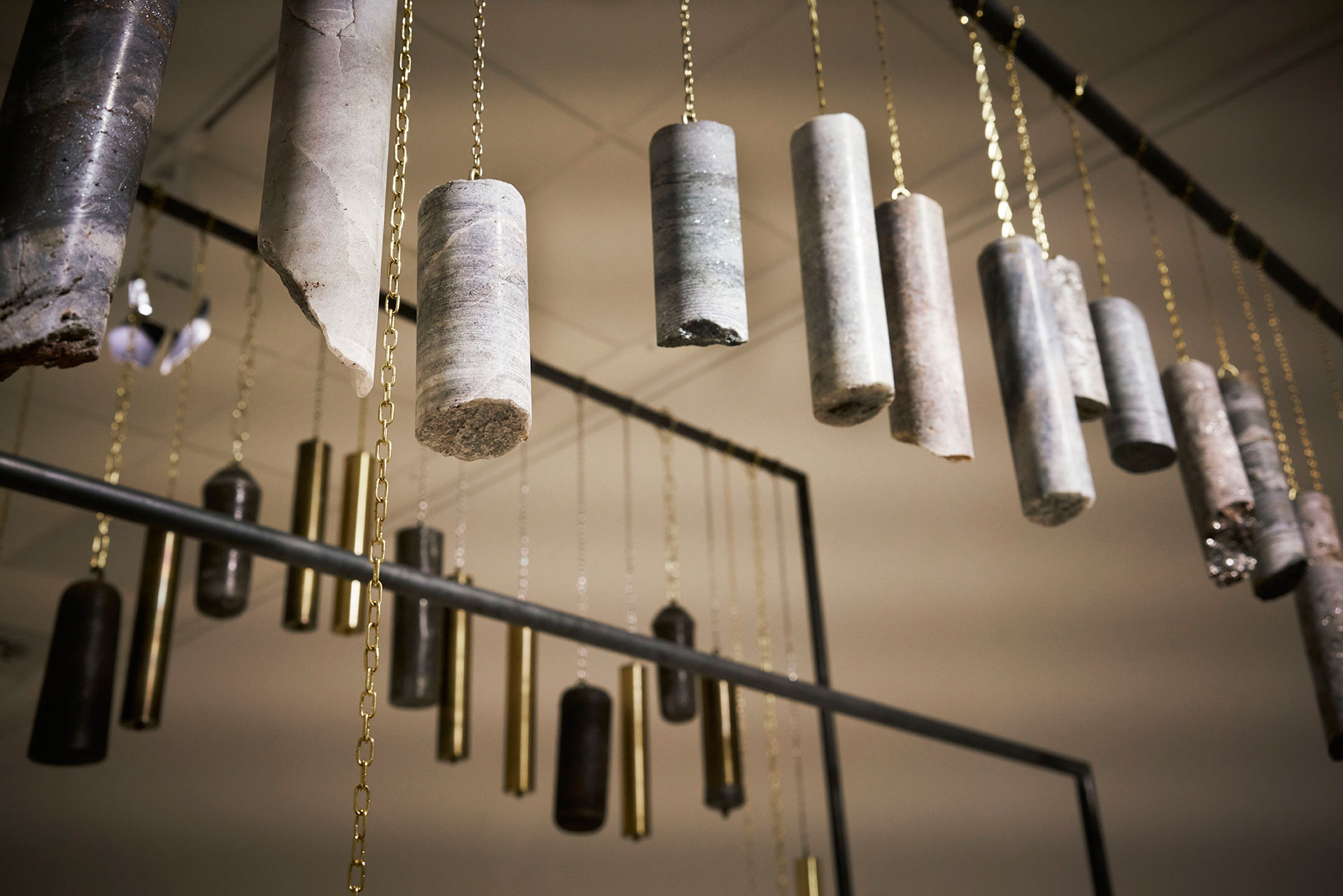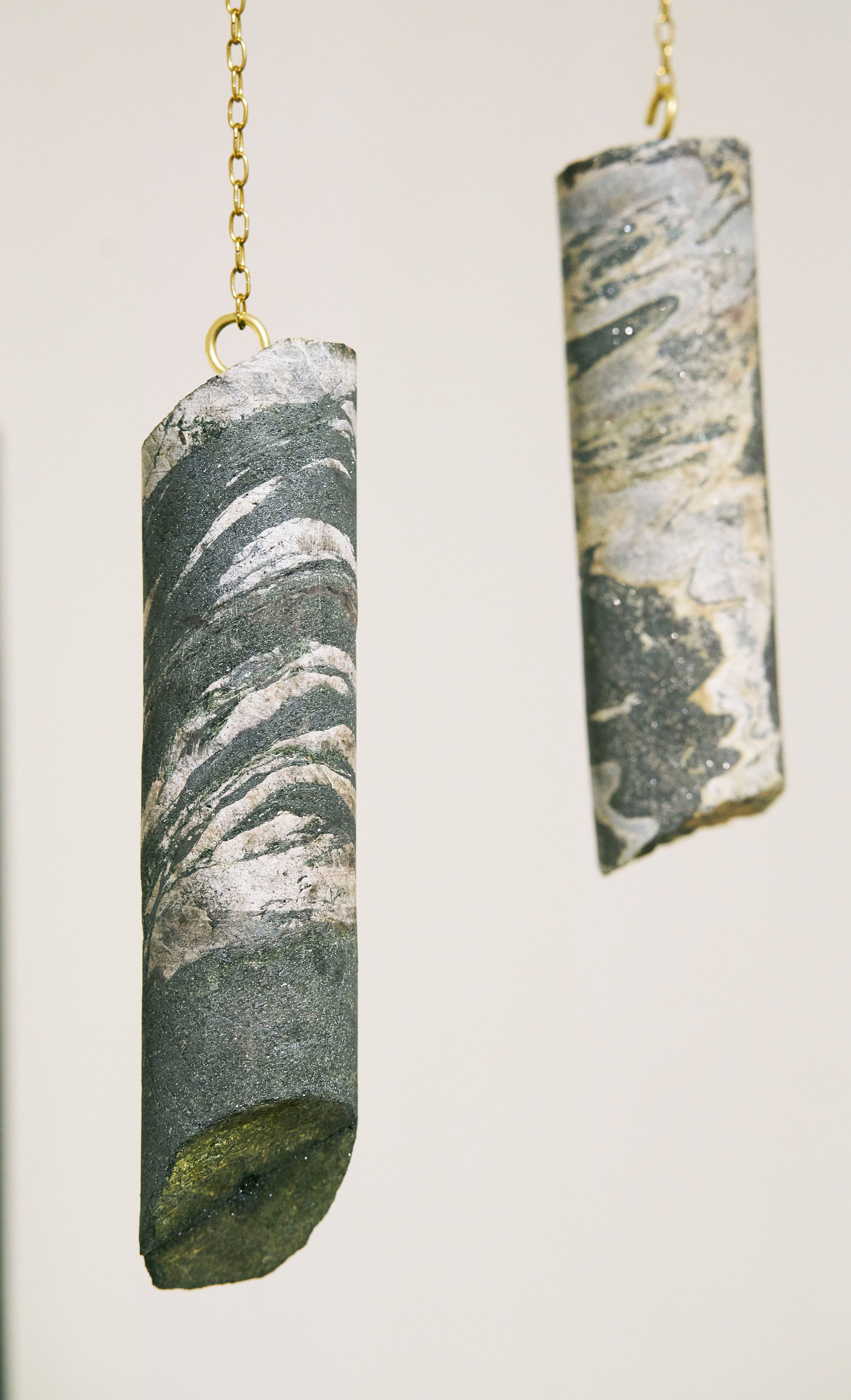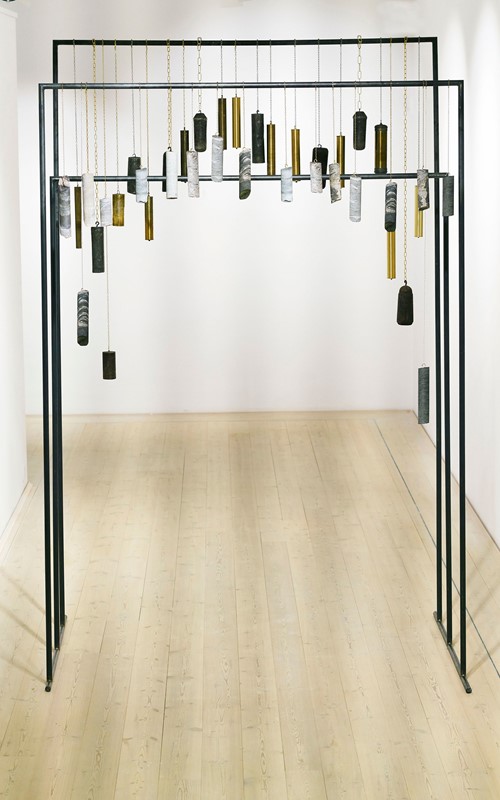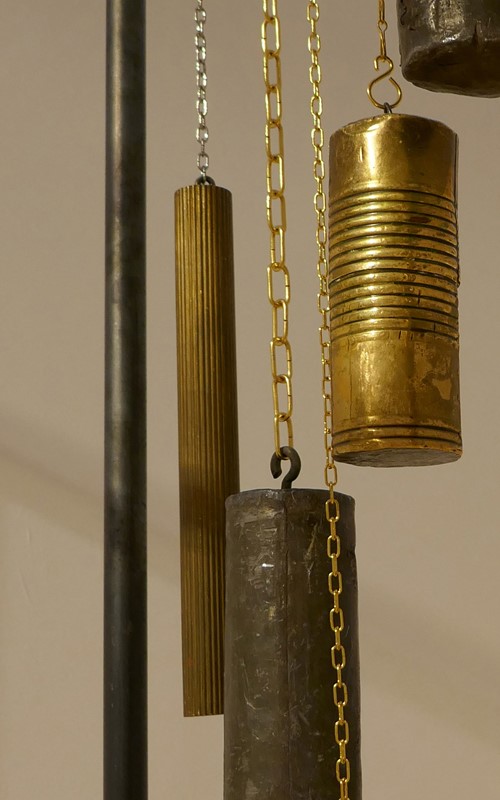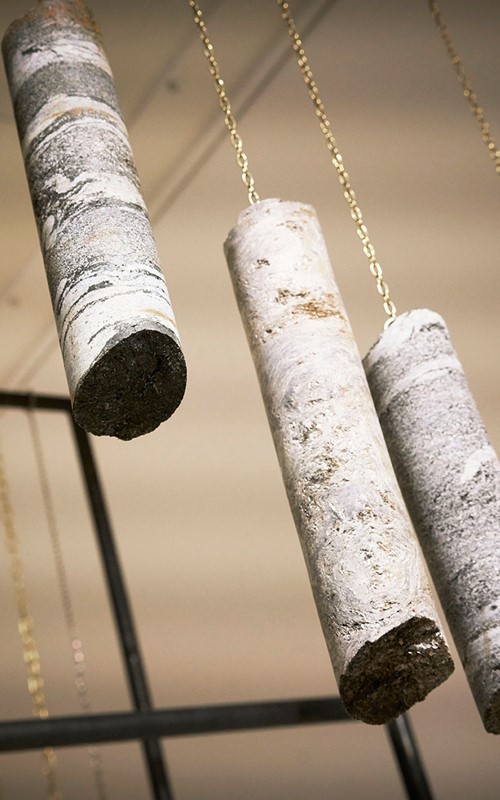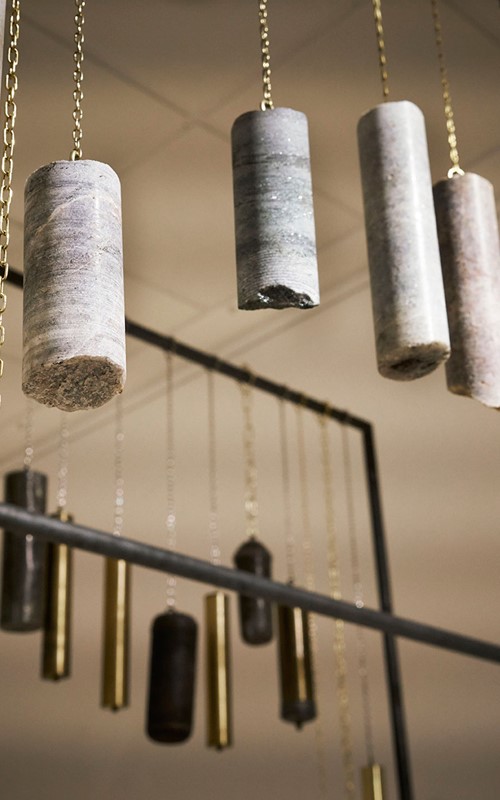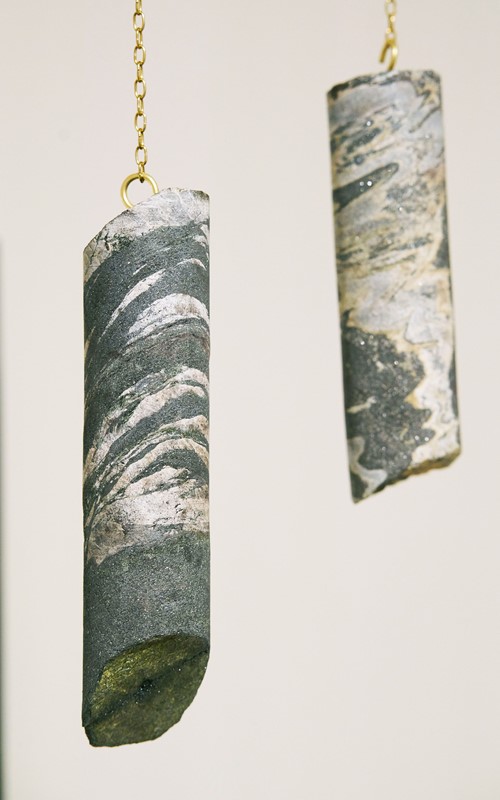Made in Time
Heavy ironstones and brass pendulums hang from tall metal structures in thin golden chains. The material is elevated both physically and conceptually. As the title reveals, Made in Time points to the concept of time; but far beyond the human-made time concept. The artwork leads us through metal gates and into another time dimension beyond human origin.
The main structure of the work is a large-scale iron construction consisting of three gate-like openings of varying heights. The iron and brass pendulums from antique clocks evoke a tangible notion of experienced time. The ironstones, excavated from underground, lead us back to the early life of Earth, serving as direct representations of deep geological time. The pendulums hang above our heads like notes in a composed interplay with their own rhythm.
The warm, yellow color from the brass pendulums stand in contrast to the grey and blue hues in the ironstones. The processing of the ironstones reveals multilayered sediments with subtle traces of the iron molecules that exist within the natural structures of the stones irreversibly imprinted through time. They are materials created long before the origin of humanity, and perhaps will exist long after our time on earth.
Underlining time, as a both human-made concept, one we guide our daily lives by, but also something that goes far beyond human life span.
The exaltation of the material points towards a world beyond the mere materiality indicating a realm beyond what’s visible. When crossing under the gate of Made in Time, we are offered a ritual transgression and a space for reflection.
